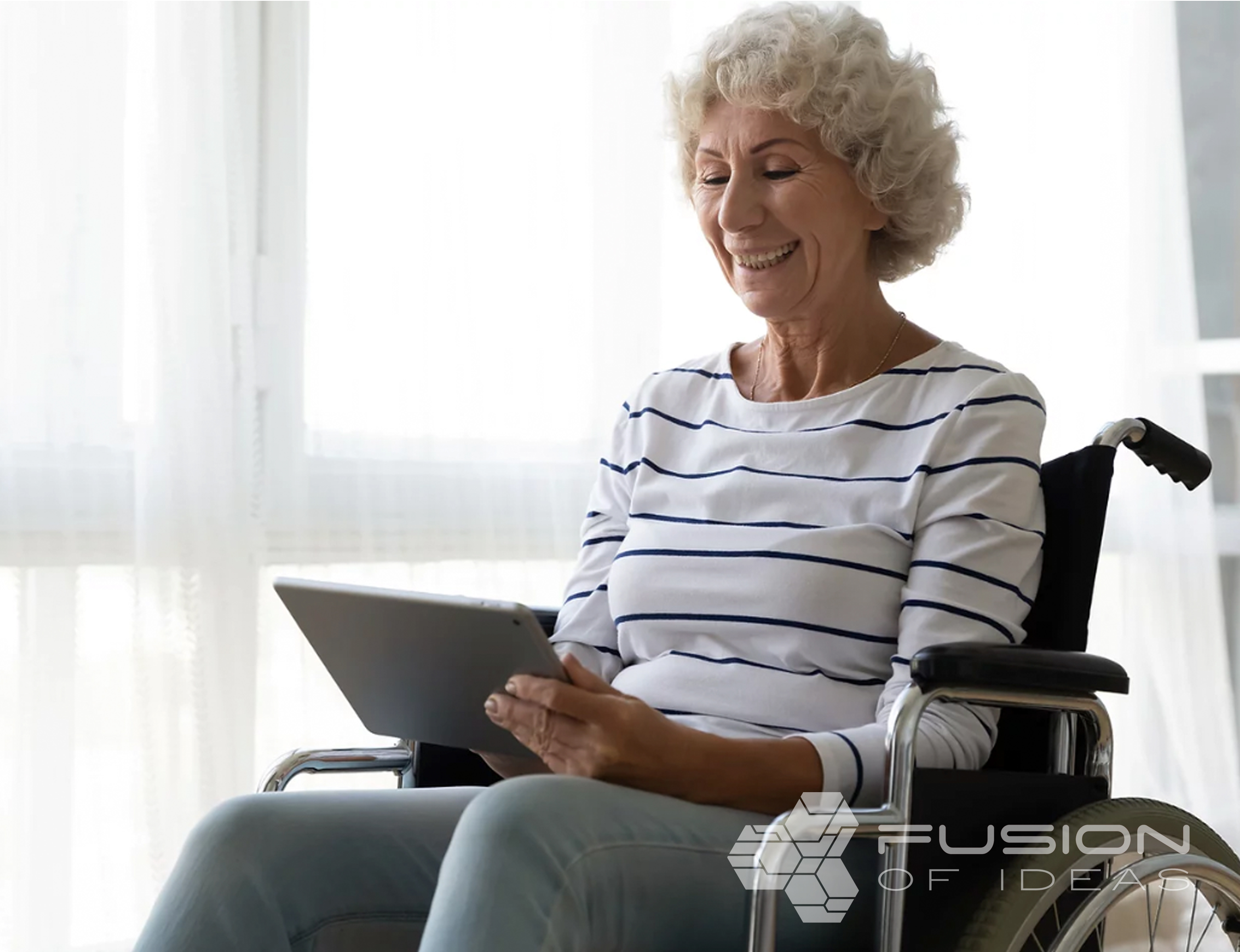Technology, specifically mobile apps, can play a big role in connecting physical rehab healthcare
providers and their patients. This is imperative when it comes to providing support for patients who
may be outside of the traditional healthcare setting. Mobile apps can help bridge the gap between
provider and patient and provide a way for patients to get the care and support they need when they
need it.
There are several different ways that mobile apps can support physical rehab healthcare providers
and their patients. For example, apps can be used to track progress and manage appointments. They
can also be used to provide educational resources or connect patients with support groups.
In addition, mobile apps can be employed to monitor vital signs and symptoms, which can help
providers make more informed assessments about treatment. Overall, mobile apps can be a valuable
tool for physical rehab healthcare providers and their patients. They can help improve communication
and support and provide a way for patients to get the care and assistance they require—when they
need it most.
Increased Engagement: When your patients are using technology as part of their physical
rehabilitation, they’re more likely to be engaged in the treatment they receive from their
providers. The enhanced engagement can lead to better outcomes and faster recovery times.
Improved Communication: Technology, when in the form of mobile apps or others, can help
improve communication between rehab healthcare providers and their patients. For example,
videoconferencing can be used to provide patients with directives about their exercises or
treatments, and patient portals can help keep everyone like-minded regarding progress and
appointment schedules.
Greater Convenience: Technology can make physical rehabilitation more convenient for both
patients and providers. Patients can use apps to track their progress and access their appointments
and therapy instruction from anywhere, while you can use telehealth services to consult with your
patients remotely as well.
Increased Access: Technology can help improve access to physical rehabilitation services,
especially for those who dwell in rural or underserved areas. For example, telehealth services can
connect patients with providers who might otherwise be unavailable.
Improved Outcomes: The use of technology in physical rehabilitation can lead to improved
patient outcomes. Patients who use technology as part of their treatment plan tend to have better
clinical outcomes than those who don’t.
Faster Recovery Times: The use of technology can accelerate your patients’ recovery process.
For example, patients who use apps to track their progress and receive feedback from their providers
tend to recover more quickly.
Reduced Costs: The use of technology can help moderate the overall cost of physical
rehabilitation. For example, telehealth amenities can help reduce travel costs for both you and your
patients.
Increased Safety: Mobile apps and other technology can also help improve patient safety. Apps
that provide exercise progress tracking can help prevent patients from overexertion and severe
injury.
Improved Compliance: The use of technology can also boost patient compliance with their
physical rehabilitation plan. For example, when your clients receive reminders or feedback via an
app, they’re more likely to stick to their workouts than others.
Enhanced Motivation: The use of mobile apps and related technology can also help increase
patient motivation. For example, patients who can track their progress and receive feedback from
their provider tend to be more motivated to continue with their physical rehabilitation.
Better Overall Experience: You can heighten the overall experience of physical rehabilitation
for both patients and providers via technology and mobile apps. Patients who go through a positive
experience are more likely to endorse the service to others, while providers who have a positive
experience are more likely to continue using it themselves.
Lack of Standardization: There is no one-size-fits-all solution when it comes to using
technology for physical rehabilitation. Every patient and healthcare provider possesses different
needs and preferences. This can make finding a response that works for everyone involved
difficult.
Limited Evidence Base: While there’s some evidence to suggest that certain technologies can
be helpful for physical rehabilitation, the research is still relatively limited. This means that
there is still a lot of uncertainty about which technologies are most effective and how they should
be used.
High Costs: Many of the most promising technologies for physical rehabilitation are still
very expensive. This can make them inaccessible to many patients and healthcare providers.
Training and Support: Many healthcare providers and patients lack the training—and support
essential in tech—for physical rehabilitation effectively. This can limit the effectiveness of even
the most promising technologies.
Privacy and Security: When personal clinical data is involved, privacy and security concerns
are always major concerns. This is especially true when it comes to new and emerging technologies,
which may not have been fully tested or vetted yet.
Improved Clinical Decision Making: Mobile apps can provide clinicians with easy access to
evidence-based guidelines and clinical decision support tools. This can help them make more educated
decisions about diagnosis and treatment.
Increased Access to Care: Mobile apps and technology can help increase access to care for
physical rehab patients by providing them with more convenient and inexpensive options.
Improved Communication: Mobile apps and technology may fortify communication between physical
rehab patients and their healthcare providers, making it easier to coordinate care and track
progress.
Enhanced Patient Engagement: Mobile apps help increase patient engagement by providing them
with access to their health data and allowing them to be more involved in their care. Software
programs also help patients manage their medications, schedule appointments, and unearth more health
resources.
Increased Patient Satisfaction: Mobile apps can help to increase patient satisfaction by
providing them with convenient access to their health information and care providers. They can also
help patients feel empowered and enmeshed in their health and overall healthcare
decisions.
Greater Transparency: Mobile apps and connected technology can provide greater transparency
into the physical rehabilitation process, making it easier for your patients to understand what to
expect and hold their providers accountable.
More Personalized Care: Mobile apps and technology can enable healthcare providers to offer
more personalized care to physical rehab patients by tailoring treatments to individual
needs.
Increased Accountability: Increase accountability among your physical rehab patients by
providing them with tools to track their progress and compliance with their treatment
plan.
Enhanced Collaboration: Mobile apps and technology can enhance collaboration between physical
rehab patients and their healthcare team by providing a platform for sharing information and
coordinating care.
Improved Outcomes: Mobile apps and other similar tools increase outcomes for physical rehab
patients by supporting a more efficient and effective rehabilitation process.
Reduced Costs: Mobile apps and technology can help reduce the cost of physical rehabilitation
by providing an alternative to traditional in-person care.
Increased Access to Research: Mobile apps and technology can increase access to research on
physical rehabilitation, making it easier for patients and providers to stay up-to-date on the
latest developments.
Improved Provider Education: Mobile apps and technology can improve provider education on
physical rehabilitation by expediently accessing information and resources.
Enhanced Patient Education: Mobile apps and technology can enhance patient education on
physical rehabilitation by providing them with tools to better understand their condition and
treatment options.
Greater Support for Caregivers: Mobile apps and technology can provide greater support for
caregivers of physical rehab patients by giving them access to information and resources that can
help them in their roles.
Most people think of physical therapy (PT) as a way to help patients convalesce after an injury or
surgery. However, PT can also be used to prevent injuries from happening in the first place. That’s
why more and more healthcare providers are using mobile apps and other tech tools to support their
PT patients
Online Scheduling and Appointment Reminders: Gone are the days when patients had to call
their PT office to schedule an appointment. Many PT practices offer online scheduling via their
website or mobile app. This makes it convenient for patients to book appointments at a time that
works for them. And, since most people always have their smartphones with them, appointment
reminders can be sent straight to their mobile devices.
Online Patient Portals: Along with online scheduling, many PT practices also offer an online
patient portal. This is a secure, online space where patients can access their PT records, view
upcoming appointments, and even message their PT directly. Patient portals make it easy for PTs to
stay organized and efficient while giving patients more control over their care.
Exercise Tracking Apps: One of the most important aspects of physical therapy is exercise.
That’s why PTs often recommend that their patients use exercise tracking apps like Fitbit or
MyFitnessPal. These apps make it easy to track progress and see results, which can help keep
patients motivated. And, since many PTs now offer remote care, these apps can be used to send
exercise data directly to the PT, so they can provide feedback and adjust treatment plans as needed.
Telehealth: Telehealth is a growing trend in healthcare, and it’s especially useful for
physical therapy. PTs can connect with their patients remotely using videoconferencing software like
Skype or Facetime with telehealth. This is valuable for patients who live in rural areas or have
transportation issues. It’s also convenient for busy patients who can’t make it to the PT office for
every appointment.
Wearable Devices: Wearable devices like Fitbit are becoming more and more popular, and they
can be a great tool for PTs. These devices can monitor your patient’s activity level, heart rate,
and sleep patterns. This data can be helpful when it comes to designing exercise programs or
determining whether someone is making headway.
And, since many wearable devices now have built-in messaging capabilities, PTs can easily stay in
touch with their patients between appointments. Technology is changing the way physical therapy is
practiced. Using mobile apps and other tech tools, PTs can provide better care for their patients
and help them achieve their goals.
What to Expect in The Future Regarding Technology and Physical Rehab Providers
Mobile apps and other technology tools are helping to connect physical rehab healthcare providers
with their patients and support them in their recovery journeys. With the continued development of
new and innovative technology solutions, physical rehab will become even more accessible and
effective, making it an essential part of the healthcare landscape.
The latest apps offer newfound opportunities for communication and collaboration between physical
rehab healthcare providers and their patients. For example, mobile apps can share information about
exercises and treatment plans or deliver reminders about appointments and medication
schedules.
In addition, many physical rehab centers are now using videoconferencing to connect with patients
who live far away or have difficulty travelling. This allows patients to receive the care they need
without leaving their homes.
Software technology also plays a major role in buttressing physical rehab patients in their recovery
journeys. For example, there are now several apps providing personalized exercise routines and
progress tracking, which can be a great motivator for patients to stick to their rehabilitation
agendas.
In addition, many wearable devices can render real-time feedback on things like heart rate and steps
taken, which can help your physical rehab patients to keep motivated and remain on track.

